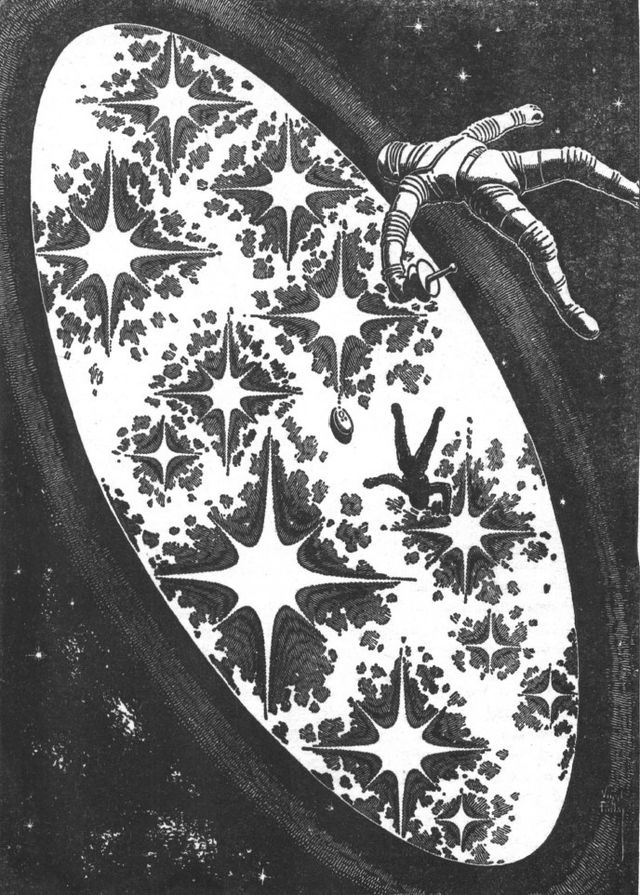-
Vijay Fafat
- Published on
A sensitively written, poignant vignette of mankind and society spread out in the solar system, with various levels of ethical and unethical treatment of man-machines and cyborgs, touching on some philosophical issues related to artificial-intelligence, machine-sentience, rights of half-machines, etc.
As one particular thread of its mythology, the story explores a gentle love story, the rescue of a maltreated boy-machine, and the subsequent overthrow of a tyrannical business owner. In that course, the protagonist, one Mr. Gallegher, gets trapped in a prison made in the form of a Klein Bottle and is rescued, with some ill-effects which are reversed surgically. This last part, while described in some lyrical detail, did not make sense to me. It seems to be introduced deux ex machina, simply for futuristic effect, without a central role in the story. The Klein bottle must also be slightly modified since it encloses a finite amount of breathable air for prisoners, unlike a true KB surface which does not enclose any volume.
The relevant mathfiction parts:
“What they did have was a topological engineer, a real, genuine, fur-bearing, wild talent who dreamed he was a penological pioneer. What he ‘built for his comrades to remember him by was a cluster of Klein ·bottles, made of transparent teflon spun over a frame of energy in hexagonal vortices.”
“You know what a Klein bottle is? That’s right, sort of a crookneck squash, with the neck growing back into the bulb, and the bulb opening out into a bell mouth which curves back and is the bulb. It’s all one shell, you understand, and the result of its construction is that it’s a quote hollow unquote object which has only one side. That is, it has neither inside nor outside.”
“The point is that once you’re _in one of them things, you can’t get out, because you’re not in it” anyway. I know you remember all this theory from headstart school, but you’ve got to realize the thing I’m talking about is not a little blown-glass artifact you can bold in your hand and shatter with a thumb snap, but a container of nearly pure energy that holds you, and that you can’t get at, no matter how hard you try.
“There was no food and no water. Nothing but air. I can’t calculate the volume of air in there with me. It must have been cubic kilometers. My suit worked after a fashion, but it was no longer a closed system because the posse had taken my helmet, so I was eternally conscious of losing moisture to that giant volume of air. I say giant, but there were no reference points, and sometimes I was sure the whole lash-up, me included, was very small. Hand size, lab size, above-picture-full-size size. That feeling was pretty bad, but there was worse. Subjectively, I was inside. Only when I thought, I knew I wasn’t inside anything. There is no “inside” to a Klein bottle.”
There are a couple of nice paragraphs on the description of distorted effects of viewing from inside a Klein bottle, but I don’t think the ending makes any sense, including a human body simply turning inside out anatomically if it completes a circuit through a Klein Bottle (you would expect everything to flip at a sub-atomic level, with all the associated unpleasant effects, including matter-anti-matter annihilation…).
In any case, an enjoyable story.
